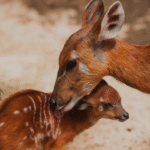
Series 3
OUTSOURCED PARENTING-BROOD PARASITISM IN BIRDS
THE COWBIRD (ICTERIDAE FAMILY)
While the cuckoo may be the superstar of brood parasitism in Europe and Africa, the cowbird wears the crown in North and South America. Named for their tendency to follow herds of grazing animals like cows and bison, these birds are part of the Icteridae family (the blackbird family). Their breeding strategy is equally parasitic, though quite different in style and scale compared to the cuckoo.

Key Parasitic Species
- Brown-headed cowbird (Molothrus ater) – Found across North America

- Shiny cowbird (Molothrus bonariensis) – Native to South America, expanding its range into the Caribbean

- Screaming cowbird (Molothrus rufoaxillaris) – South American species specialized in parasitizing the baywing

- Bronzed cowbird (Molothrus aeneus) – Found in Central America and southern U.S.

Habitat and Distribution
Cowbirds are incredibly adaptable and are found in grasslands, farmlands, open woodlands, and even suburban neighborhoods. They are especially common in areas disturbed by human activity, such as pastures and crop fields.

This preference has helped the brown-headed cowbird expand its range massively across North America, especially after deforestation and livestock farming became widespread.
Diet and Feeding
Cowbirds feed mostly on seeds and insects, often foraging on the ground near grazing animals, which disturb insects and expose food. They also eat grains and, occasionally, small fruits.

Unlike cuckoo chicks, cowbird chicks don’t usually evict host eggs or chicks. Instead, they rely on outcompeting them for food. They beg louder, grow faster, and tend to monopolize feeding attention from host parents.

Some host chicks may survive, but their development is often stunted or delayed.
Host Species and Egg Strategy
Cowbirds are generalists when it comes to hosts. The brown-headed cowbird alone has been recorded parasitizing over 220 different bird species, from warblers and vireos to finches and robins.
However, their eggs don’t mimic host eggs the way cuckoo eggs do. They rely more on speed and abundance:
- The female cowbird lays an egg quickly, often in under 10 seconds.
- She may lay up to 40 eggs in a single breeding season, each in a different nest.
- Some nests are double or triple parasitized, sometimes even by other cowbirds.

If a host bird rejects her egg, the cowbird might retaliate by destroying the nest, a behavior that scientists call “mafia behavior.”
Breeding and Mating Behavior
Cowbirds have polygynous mating systems, where one male may mate with multiple females. Males display by puffing out their chests, spreading wings, and singing complex songs.

Female cowbirds are extremely mobile. They don’t build nests, don’t incubate eggs, and don’t rear young. Instead, they spend time watching other birds, observing potential host nests, and returning at the perfect time to deposit their eggs.

Because cowbird chicks don’t imprint on their foster parents the way some other birds might, they instinctively seek out and join flocks of cowbirds after fledging.
Social Behavior and Group Living
The brown-headed cowbird is a short-distance migrant, overwintering in the southern U.S.A and Mexico and returning north to breed in the spring.

The shiny cowbird, originally confined to South America, has expanded into the Caribbean and even southern Florida due to climate change and habitat alteration.

This expansion is putting endangered island bird species like Kirtland’s warbler, Black-capped vireo, and Golden-cheeked warbler at serious risk, as they have not evolved defenses against brood parasitism.

Conservationists often remove cowbird eggs from nests or trap adult females in critical areas. Entire management programs exist solely to reduce the cowbird’s impact. While the bird is native, its population surge, fueled by human changes to the landscape, has made it a problem for biodiversity.
Fascinating Facts
- Some cowbirds specialize in certain host species, while others remain true generalists.
- Cowbird chicks can manipulate host behavior by mimicking the vocal begging calls of host species chicks, increasing the chances of being fed.
- Certain birds, like the yellow warbler, have evolved the ability to bury cowbird eggs under a new nest floor and lay their own clutch on top, a unique rejection strategy.
Conclusion in the form of Human Analogy
If the cuckoo is the stealthy thief that replaces your baby and leaves, the cowbird is more like the neighbor who keeps dropping their kids off unannounced for dinner, over and over again, every week, and expects you to raise them while they go out and party. They don’t even pretend to hide it anymore. Yet somehow, you still feed their kid.




